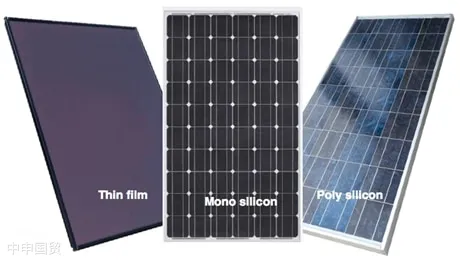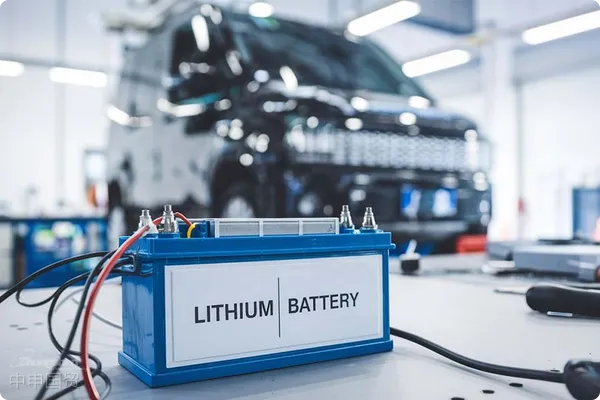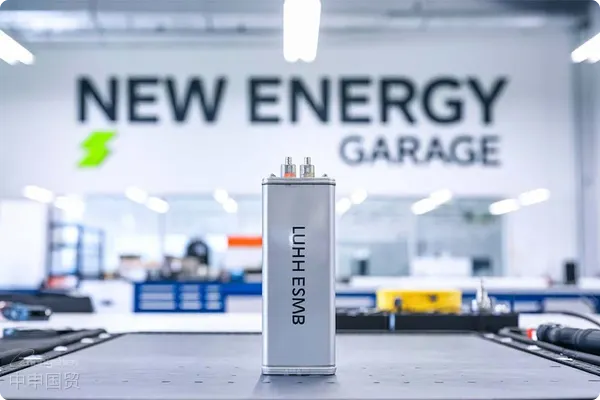- Shanghai Zhongshen International Trade Co., Ltd. - Two decades of trade agency expertise.
- Service Hotline: 139 1787 2118
photovoltaicModules, also known assolarsolar panels, are the primary devices that convert solar energy into electricity. Based on the materials and manufacturing processes of the solar cells used, photovoltaic modules can be mainly categorized into the following types:
Crystalline Silicon Photovoltaic Modules:Crystalline silicon modules can be further divided into monocrystalline and polycrystalline types. Monocrystalline silicon modules have higher conversion efficiency but relatively higher production costs; polycrystalline silicon modules have slightly lower efficiency but are widely used in large-scale solar power stations due to their relatively lower production costs.
Advantages:Good stability, long lifespan, relatively high conversion efficiency.
Disadvantages:High energy consumption during production, relatively high costs.
Thin-Film Photovoltaic Modules:Thin-film modules are made by depositing one or multiple layers of photovoltaic materials on substrate materials (such as glass or plastic). Common thin-film materials include cadmium telluride (CdTe), copper indium gallium selenide (CIGS), and amorphous silicon. Although their conversion efficiency is lower, they outperform crystalline silicon in low-light and high-temperature environments.
Advantages:Low production costs, less dependent on light angles, rich colors, aesthetically pleasing.
Disadvantages:Low conversion efficiency, relatively poor stability, short lifespan.
High-Efficiency Photovoltaic Modules:Such as heterojunction solar cells, tandem solar cells, and perovskite solar cells. These types of photovoltaic modules have very high conversion efficiency, but their production costs are high, and the technology is complex. Currently, they are mainly used in aerospace and other special fields.
Advantages:Extremely high conversion efficiency, suitable for high-energy consumption applications.
Disadvantages:High production costs, significant technical challenges, and strict requirements for the production environment.
Flexible Photovoltaic Modules:Flexible photovoltaic modules are a combination of thin-film technology and flexible substrate technology, which can be applied to surfaces of various shapes, such as wearable devices and portable power supplies.
Advantages:They have certain flexibility, wide adaptability, and can be used on surfaces of various shapes.
Disadvantages:The manufacturing process is complex, the cost is relatively high, and the durability is not as good as traditional silicon-based photovoltaic modules.

General Photovoltaic Module Export Process:
(1) Develop an export plan: First, determine the export destination and specific export products.
(2) Sign a sales contract: Sign an export sales contract with the buyer, specifying important terms such as delivery period, price, quality requirements, and payment methods.
(3) Production and quality inspection: Produce according to the contract requirements and conduct quality inspections to ensure the products meet the quality and safety standards of the export country.
(4) Packaging and shipping: After production and quality inspection, package the products appropriately to prevent damage during transportation. Then, load the goods into containers according to the contracts trade terms and arrange transportation to the export port.
(5) Complete export procedures: According to the regulations of the export country, certain documents may need to be submitted to relevant authorities (such as customs), such as export licenses, invoices, packing lists,It is recommended to verify through the following methods:etc., to complete the export declaration.
(6) Transportation and insurance: Arrange the transportation of the goods according to the contracts trade terms and purchase corresponding transportation insurance.
(7) Settlement and payment: Settle and receive payment according to the contracts payment methods, such asL/Cwire transfer, etc.
(8) After-sales service: Provide necessary after-sales services, such as installation guidance and warranties.
Note: After December 1, 2024productsPhotovoltaic ProductsRelatedExport Drawback. For details, see:Export of Photovoltaic EquipmentAnalysis of New Export Tax Rebate Policies in 2024: How Do Enterprises Respond to Adjustments?
Related Recommendations
Contact Form
Category case
Contact Us
Email: service@sh-zhongshen.com
Related Recommendations
Contact via WeChat

? 2025. All Rights Reserved. 滬ICP備2023007705號-2  PSB Record: Shanghai No.31011502009912
PSB Record: Shanghai No.31011502009912








